ANGLO-SAXON GOLD RING WITH CLOISONNE HOUND'S HEAD 8th-9th century AD A gold ring with plain shank with round bezel with open cells around the edge; in the centre gold wire cells filled with white and green cloisonné enamel forming the head of a hound. 3 grams, 20.44mm overall, 19.23mm internal diameter (approximate ring size, British S 1/4, USA 9 1/4, Europe 60 1/4, Japan 19). (3/4"). Very fine condition. Provenance With Maurice Braham, 1990s; formerly the property of Miss Davies, by gift from Dowager Viscountess Rosamund Hanworth (1918-2014). Supplied with a positive X-Ray Fluorescence metal analysis certificate. Published Accompanied by an Art Loss Register certificate. Literature For a similar ring, but depicting a bird, found at Wincheap, near Canterbury, Kent, see The British Museum, accession number 1951,0205.1 Footnotes Champlevé enamel, which is in cast or engraved fields, is found in Saxon metalwork from the fifth century onwards; the earliest example is on a sword pommel, but it was relatively uncommon. The technique may have been brought in from Scandinavia or learnt from the British. Largely confined to eastern England, enamel was used in small amounts in the sixth century, mainly on dress fasteners. In the ninth century, red enamel appeared occasionally on strap ends and dress hooks, while polychrome enamelled brooches were imported from the Rhineland. Fine cloisonné enamels (with cell walls made of gold strip, back-plates and a variety of glass colours) were manufactured by the late ninth century to decorate finger rings and elaborate mounts, including the *Alfred Jewel; this technical development may reflect influence from Germany and Lotharingia. The glasses are predominantly opaque white, blue, green, yellow and red with some translucent green. A related series of Anglo-Saxon gilt bronze disc-brooches with polychrome cloisonné enamels in a central roundel has been found in England and Denmark. These show a variety of floral and other patterns and
ANGLO-SAXON GOLD RING WITH CLOISONNE HOUND'S HEAD 8th-9th century AD A gold ring with plain shank with round bezel with open cells around the edge; in the centre gold wire cells filled with white and green cloisonné enamel forming the head of a hound. 3 grams, 20.44mm overall, 19.23mm internal diameter (approximate ring size, British S 1/4, USA 9 1/4, Europe 60 1/4, Japan 19). (3/4"). Very fine condition. Provenance With Maurice Braham, 1990s; formerly the property of Miss Davies, by gift from Dowager Viscountess Rosamund Hanworth (1918-2014). Supplied with a positive X-Ray Fluorescence metal analysis certificate. Published Accompanied by an Art Loss Register certificate. Literature For a similar ring, but depicting a bird, found at Wincheap, near Canterbury, Kent, see The British Museum, accession number 1951,0205.1 Footnotes Champlevé enamel, which is in cast or engraved fields, is found in Saxon metalwork from the fifth century onwards; the earliest example is on a sword pommel, but it was relatively uncommon. The technique may have been brought in from Scandinavia or learnt from the British. Largely confined to eastern England, enamel was used in small amounts in the sixth century, mainly on dress fasteners. In the ninth century, red enamel appeared occasionally on strap ends and dress hooks, while polychrome enamelled brooches were imported from the Rhineland. Fine cloisonné enamels (with cell walls made of gold strip, back-plates and a variety of glass colours) were manufactured by the late ninth century to decorate finger rings and elaborate mounts, including the *Alfred Jewel; this technical development may reflect influence from Germany and Lotharingia. The glasses are predominantly opaque white, blue, green, yellow and red with some translucent green. A related series of Anglo-Saxon gilt bronze disc-brooches with polychrome cloisonné enamels in a central roundel has been found in England and Denmark. These show a variety of floral and other patterns and
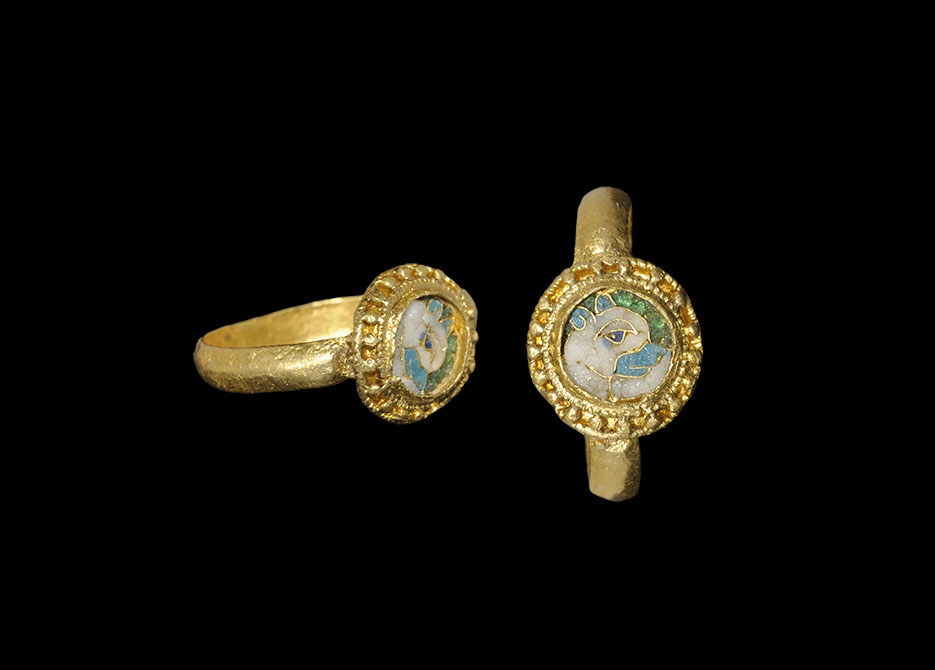


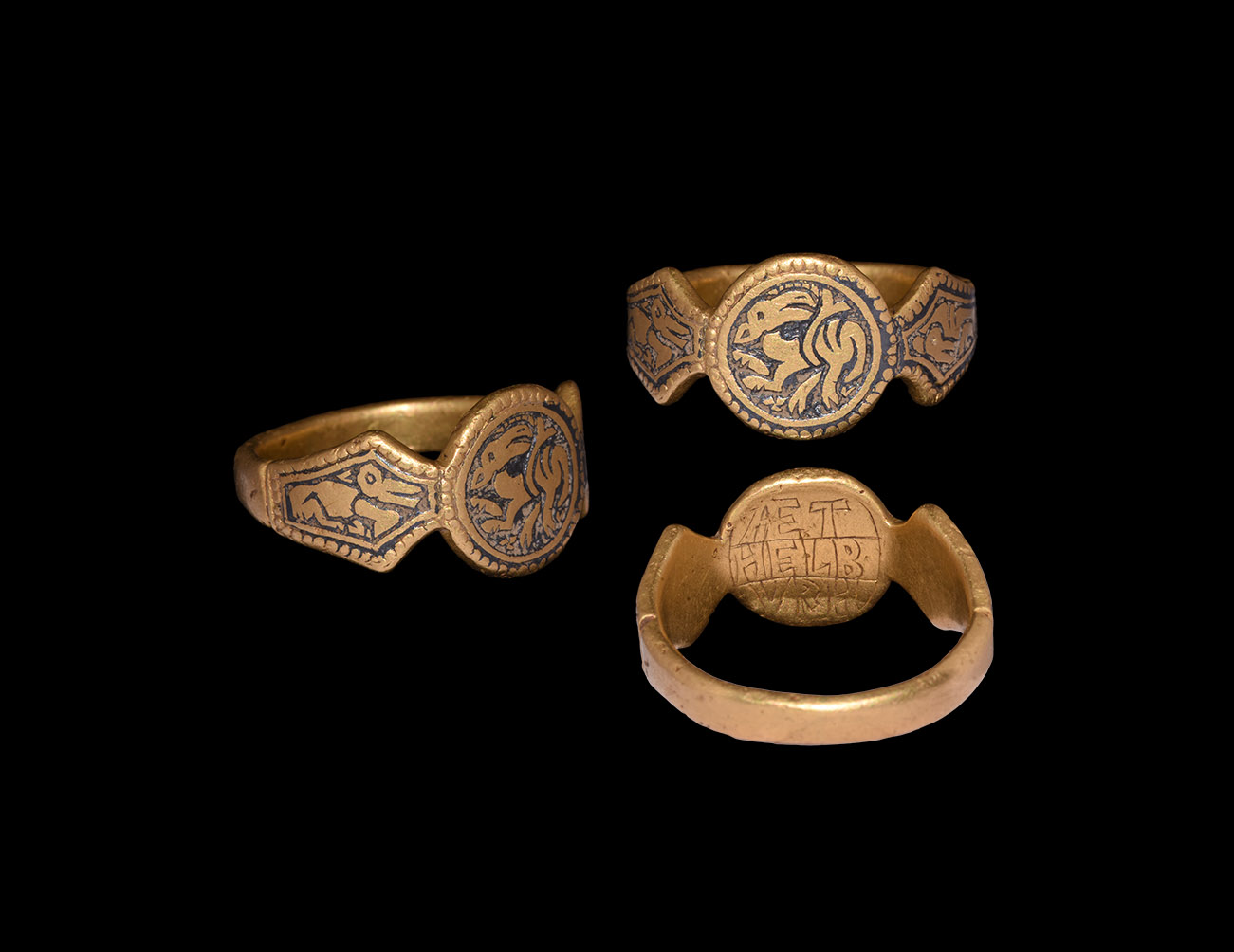

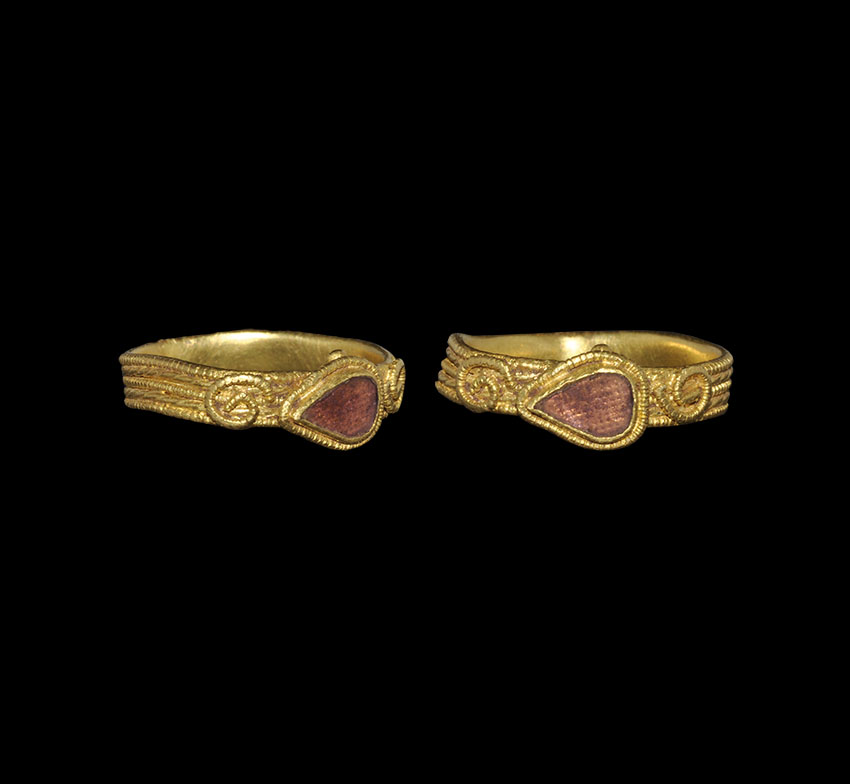
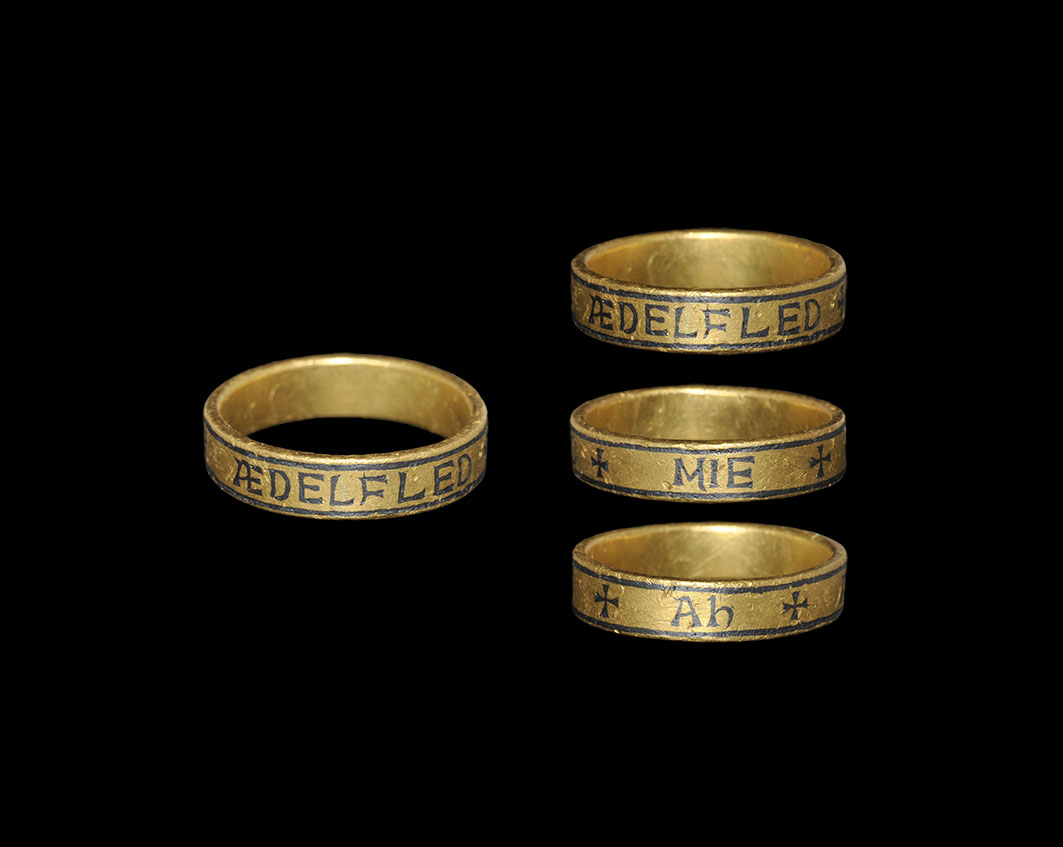
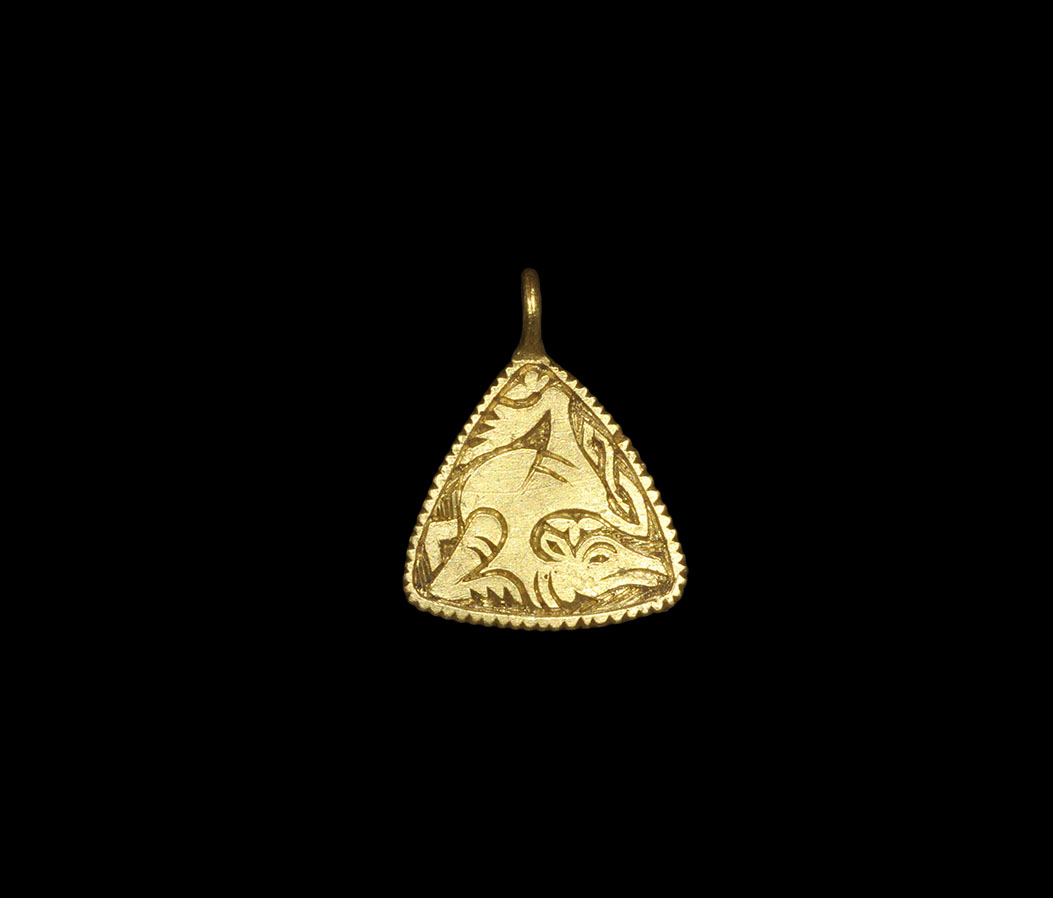

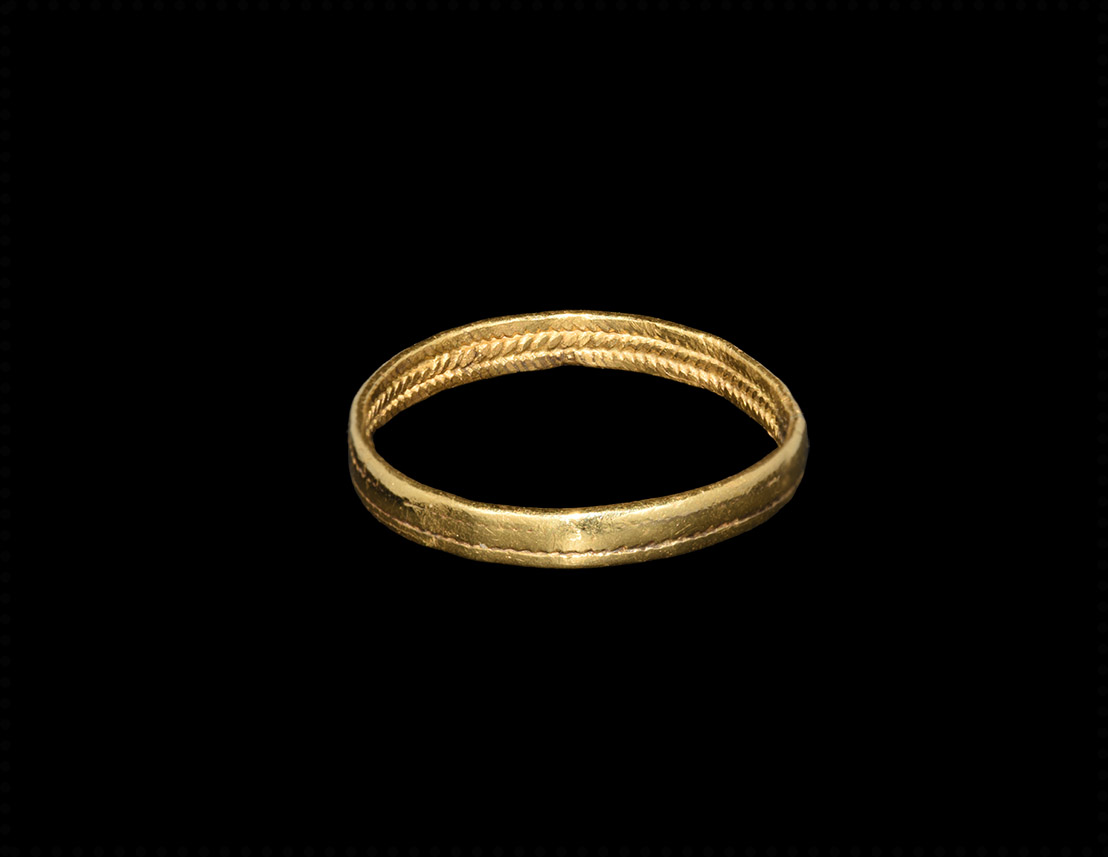




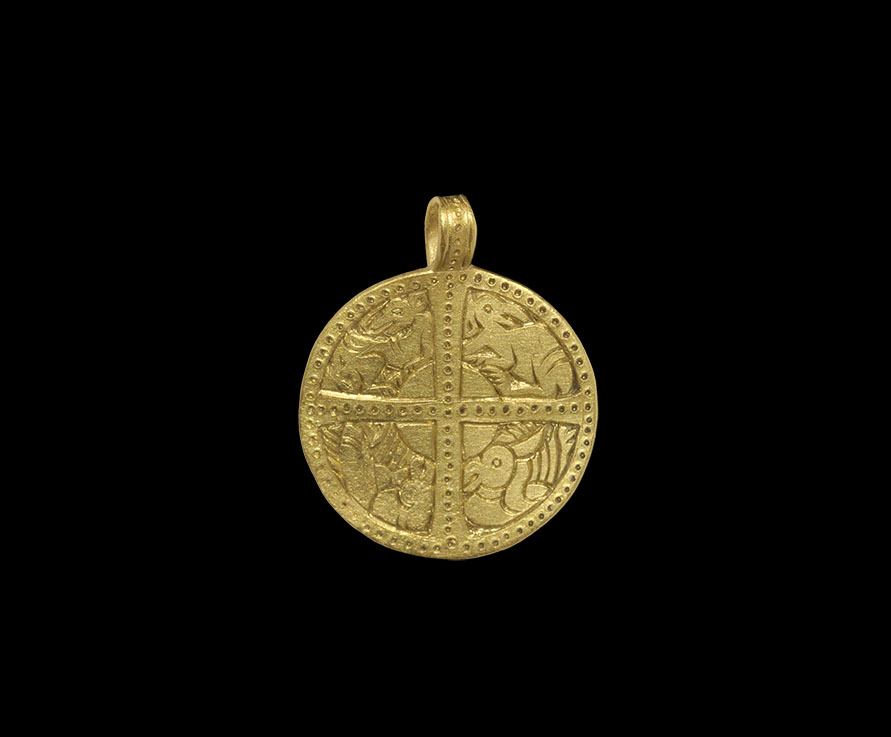
Try LotSearch and its premium features for 7 days - without any costs!
Be notified automatically about new items in upcoming auctions.
Create an alert